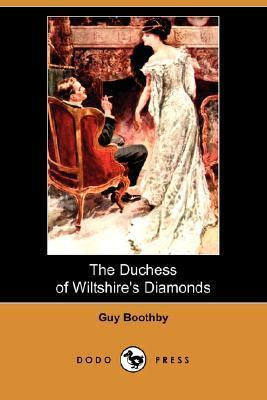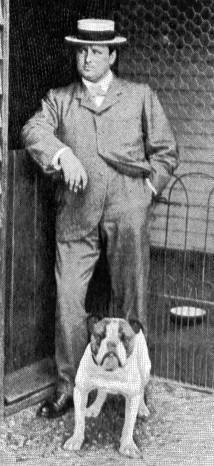
Author

Guy Newell Boothby was born in Adelaide, South Australia, the son of Thomas Wilde Boothby, a Member of the South Australian House of Assembly. At six years of age he travelled with his mother to England and was educated at Lord Weymouth's Grammar School, Salisbury and at Christ's Hospital, London between 1874 and 1883. When his education was over he returned to Australia where he eventually became secretary to the Mayor of Adelaide, Lewis Cohen. He was dissatisfied with his prospects in Adelaide and consequently he moved to Brisbane where he hoped his prospects would be better. In the meantime he wrote a series of comic operas and plays, all of which were relatively unsuccessful. He was of a roving disposition and at age 24 he travelled across Australia from north to south and later he travelled extensively in the East. By 1894 he had married Rose Alice Bristowe and he and his wife moved to England in that year, which was notable for the publication of his first book, 'On the Wallaby, or, Through the East and Across Australia', an account of his and his brother's travels in Australia. He was given advice and encouragement in his writing by none other than Rudyard Kipling and the year 1895 saw the publication of three novels, the most significant of which was 'A Bid for Fortune: or, Dr Nikola's Vendetta'. This introduced probably his best known character, Dr Nikola, a ruthless, unscrupulous figure, with his ubiquitous large cat, who was to feature in five of his novels over the ensuing years. The book was an instant success and brought him a certain amount of fame. Dr Nikola had first appeared in serial form in the Windosr Magazine. Over the next 10 years he was to write another 50 books and a further five were published posthumously, the last of which was 'In the Power of the Sultan' (1908). He was so prodigious that the story circulated that he spoke his tales into a phonograph, from which they were later transcribed by secretaries. He is perhaps remembered also for introducing one of the early gentlemen crooks of literature when he featured Simon Carne in 'A Prince of Swindlers' in 1897. Carne had originally appeared in Pearson's Magazine and as a gentleman crook he pre-dated another of his kind in A J Raffles by two years. Boothby's novels were often set in Australia (not surprisingly) and were classed as 'fast-paced thrillers' although some felt that although exciting in plot they were 'hastily and carelessly written'. In addition they were said to have been enjoyed by those who 'care for frank sensationalism carried to its furtherest limits'. Despite these comments his books were extremely popular and made him one of the most successful novelists of his day. Boothby, who was also a successful breeder of prize dogs, died suddenly of pneumonia at his home, Winsley Lodge, Watkin Road, Bournemouth in 1905. He left a widow and three children. Gerry Wolstenholme February 2012